This is now the fourth consecutive year that Design Master Software has conducted a survey of engineers and designers in the MEP industry about whether or not they are using building information modeling (BIM) on their projects. This article is a complete overview of all the data we gathered. Some of it interesting, some of it is not.
The survey was conducted online. A link to the survey was included in our monthly newsletter, on various LinkedIn groups, on Autodesk’s AutoCAD MEP forum, and on AUGI’s Revit MEP forum. Results from the survey in 2010, 2011, and 2012 are available online.
Comparing this year’s results with the first year, we found that far fewer projects today include 3D collision detection than people predicted 3 years ago. Also, the number of projects today that include 3D collision detection is about the same as the last 3 years. The Prediction of BIM Being Used on More Projects is Wrong article discusses these results more completely.
Demographics
This year, 92 people responded to the survey, 80 of whom were located in the United States or Canada. Like last year, most of the respondents worked at consulting companies and at large companies. We added a new question this year, asking about the size of the MEP design team where the respondent worked.
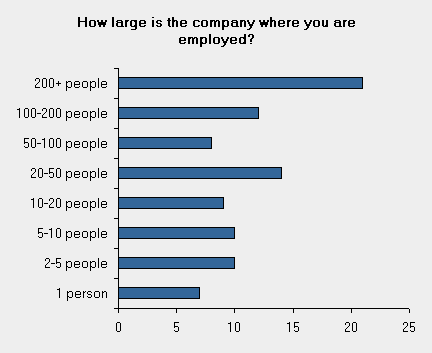
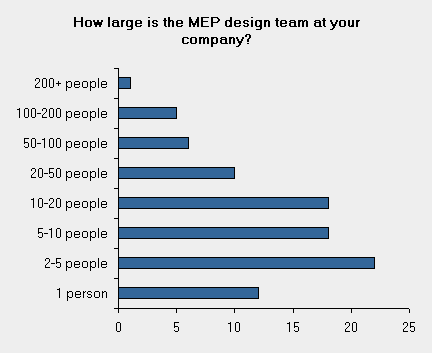
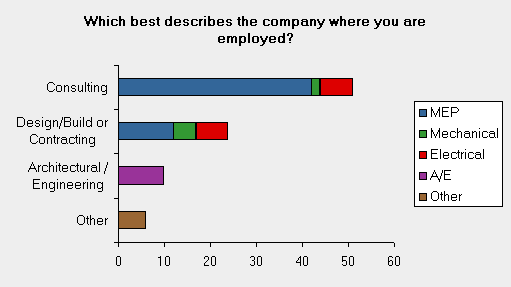
We asked which BIM programs the respondents use. Two-thirds of the respondents in the survey use Revit MEP, half use AutoCAD MEP, and half use Design Master HVAC, Electrical, or Plumbing. There was significant overlap between the three programs, with many respondents using a combination of two or three of the programs. Due to the fact that we sponsored the survey and advertised it in our monthly newsletter, the number of DM users relative to the industry as a whole is overstated.


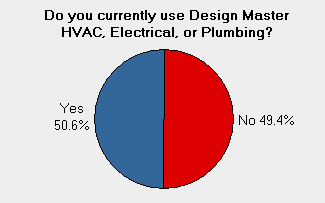
Types of BIM Used
BIM and 3D are not the same thing. You can use BIM for many other purposes, such as automated design, material takeoffs, and green design. We wanted to know how the various types of BIM were being used on projects, not just 3D collision detection (3D-BIM). We found that 74% of respondents are using 3D-BIM on some of their projects. Only 20% of respondents said that they do not use BIM. Comparing the results from previous years with this year, there does not appear to be much change in the use of the different types of BIM.
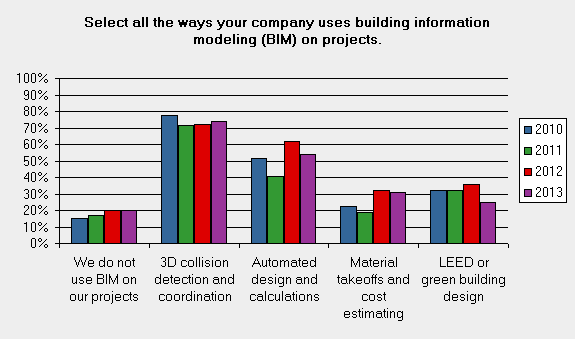
Using the demographic information, we can compare the use of BIM based upon the type of company. Large firms uniformly used more types of BIM than smaller firms did.
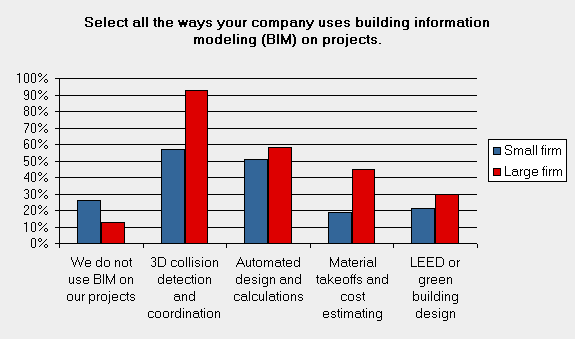
Comparing firm types, contracting firms were slightly more likely to use BIM for 3D collision detection and much more likely to use it for material takeoffs. A/E firms were much less likely to use BIM for automated design and calculations.
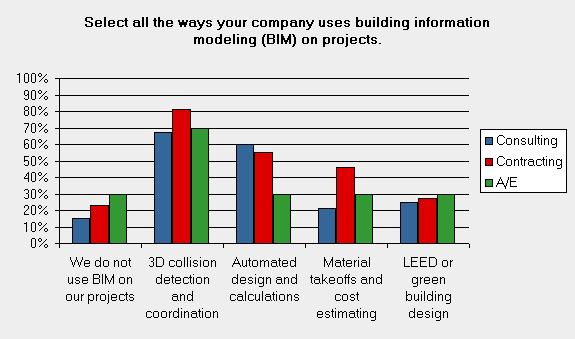
Finally, Revit users used all types of BIM much more frequently than non-Revit users.
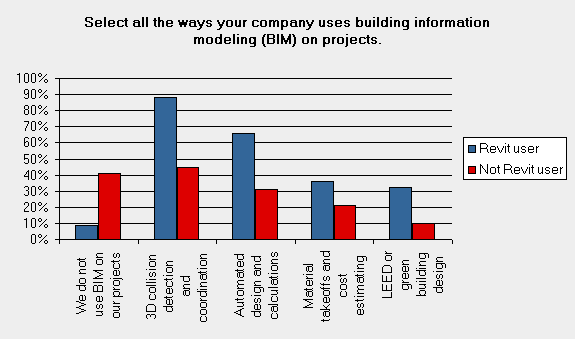
Current Projects Using 3D-BIM
We asked what percentage of current projects the respondents work on use 3D-BIM. The graph can be a little confusing to read at first. The x-axis is the answer the survey respondent gave to the question. The y-axis is the number of respondents who gave that answer. For example, at the far left of the graph, 22% of respondents use 3D collision detection on none of their projects. At the far right, 6% of respondents use 3D collision detection on all of their projects.
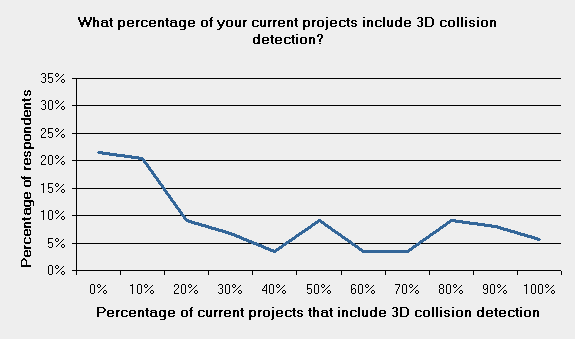
Comparing this year with previous years, the shape of the graph has not changed much. The use of 3D collision detection in 2013 is basically the same as in 2010.
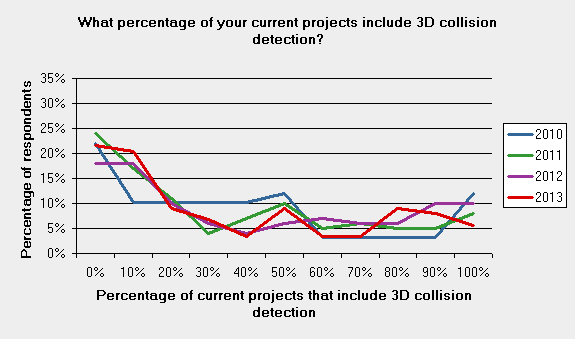
Using the demographic information, we can also compare the use of 3D collision detection based upon the type of company. Not surprisingly, large firms tend to use 3D collision detection more frequently than small firms.
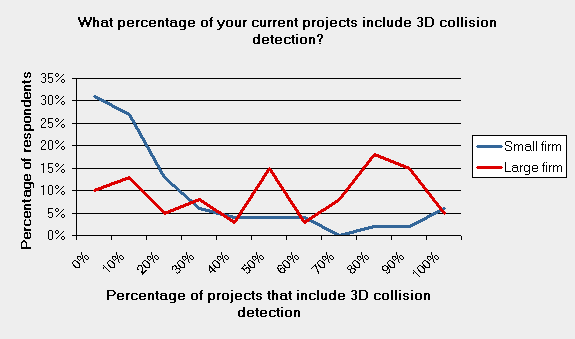
Contracting firms are more likely to use 3D collision detection than consulting firms.
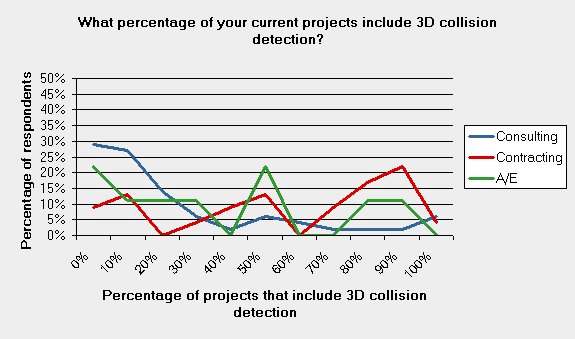
Finally, Revit users are more likely to use 3D collision detection than non-Revit users.
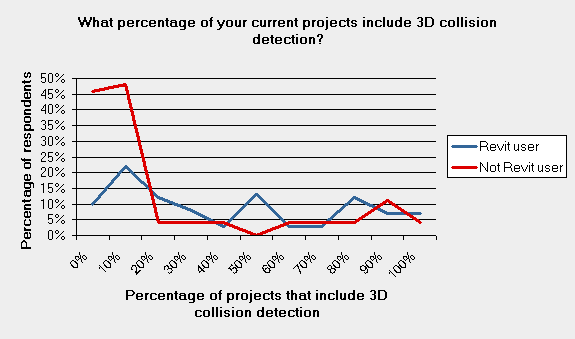
Creating a 3D model and coordinating it with other disciplines is a time-consuming process. We asked whether firms are able to charge for the additional time required on projects that use 3D-BIM. This number continues to bounce around 50% each year. In 2010 it was 40%, in 2011 it was 56%, in 2012 it was 49%, and this year it is 46%.
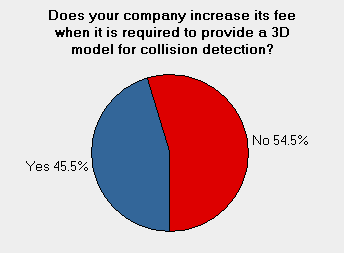
Future Projects Using 3D-BIM
We also asked what percentage of projects in three years would be designed using 3D-BIM.
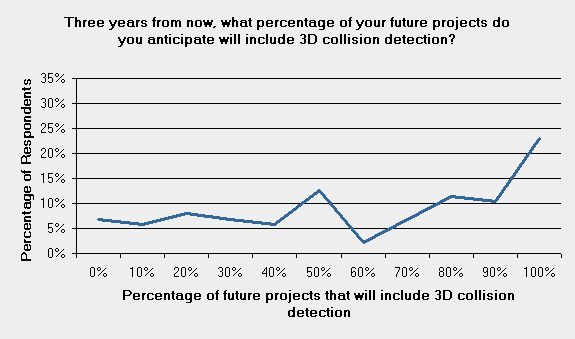
Comparing this year with previous years, the shape of the graph has not changed much. The expectation of the use of 3D collision detection in the future in 2013 is basically the same as in 2010.
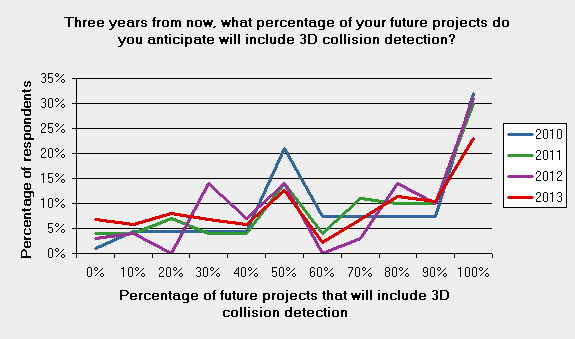
Conclusions
For our analysis of the survey results, see the Prediction of BIM Being Used on More Projects is Wrong article.
